Luke Munn – 17 September, 2015
The Shadow of the Dome of Pleasure charts the historical migration of instrumentalised affect and above all, the language which co-creates it. Performative labour that spreads from the film-star to the service worker, from the realm of the cinema to that of the everyday.
Auckland
International group exhibition
The Shadow of the Dome of Pleasure
Curated by Henry Davidson
4 September - 10 October 2015
With the deregulation of airlines in 1978, the competitive edge shifted from a focus on price points to the ‘personal touch’ offered. Flight attendants, with their high customer contact, became the physical manifestation of a brand vision. Their labour had become primarily emotional labour and the notion of work had shifted from something you make to “how your display of feelings makes others feel” (1) . At Delta Airlines, after passing an initial screening for aspects like figure and facial regularity, potential applicants would move onto an “animation test” (2) with three men and three women, designed to test their ability to bring each other out using friendly banter, generous gestures and bubbly laughter.
With time, more experienced employees began to report a doubled identity, a precarious “separation of self from role” (3) which had to be consciously policed. In our current landscape, even these blurry delineations have collapsed into an affective supply chain that starts at the inner, emotive core and ends with a performance externalized on the epidermis - a greeting, a smile, a touch.
The Shadow of the Dome of Pleasure charts this historical migration of instrumentalised affect and above all, the language which co-creates it. Performative labour that spreads from the film-star to the service worker, from the realm of the cinema to that of the everyday.
The theme is aptly staged within custom architecture designed by artists Alexander Laurie and Biljana Popovic in conversation with curator Henry Davidson. An oppressive extrapolation of the ‘black box’ and ‘white cube’ standards, each video is isolated in its own chamber, forming a dark felt labyrinth reminiscent of a club or funhouse. The remaining empty central space, envisioned as a “sanctuary” (4), only seems to intensify the social performances which take place around exhibition events. Extending to the ceiling with padded white walls, the glare of the overhead fluorescents illuminates every flaw and fumble.
Davidson made a conscious decision to run against the light touch favoured by many curators and “not disappear” (5). The result is a control structure which places the viewer on rails, locked into a clockwise cycle that matches the looping of video or repetition of speech. Round and round the viewer moves, encountering the same scene, hearing the same lines.
Warhol’s Blow Job opens this cycle, a silent movie which frames only the head and shoulders of a subject who is (we assume) receiving fellatio. The work has many layers, not the least of which is the forced invisibility of gay desire in sixties America. The uncredited star is DeVeren Bookwalter, whose bio as an award-winning actor and married heterosexual man alludes to the ambiguities embedded here (6) - sex which is staged but sensual, rehearsed but real.
Oscillating between languid boredom and ostensible ecstasy, it becomes increasingly difficult to separate the gestures produced by bodily sensation and those contrived for the camera. Bookwalter arcs his neck backwards against the concrete wall, lips parted in possible climax, while the film simultaneously blows out into white overexposure and filmic grain. With its offscreen action, repetitious movements and long duration, Warhol constantly undermines ‘liveness’ to remind us that this is a film. The sex provides the catalyst for the action, but as with his Screen Tests series, it’s the soft power of the camera that produces the real behaviour. Silent but commanding, seductive or repelling, the unspoken demand of the lens is always the same - perform.
This thread is picked up by Juliet Carpenter’s Ingénue, in which the typecast girl-next-door utters emotive lines in an over-acted style. As she waits silently for her cue, the screen flashes momentarily with crop marks and a ‘REC’ text, producing a quick inhalation by the performer before language gushes forth in an anguished stream. “…Cascading out of the troposphere …gnashing consensus rubbed against my flaking clavicles”.
Carpenter’s previous work has drawn from the experimental poetry of 70s magazine, L=A=N=G=U=A=G=E, a movement which sought to obliterate narrative and structural conventions in favour of a “purposeless play” (7) with dangling, fragmentary phrases. If that movement ‘”anticipated our consumerist world of news snippets, ad men and political sound bites” (8), then Carpenter seems to push it forward again, straddling a line between the poetic ruptures of modernist avante-garde forms and the radically compliant speech of chatbots and spam emails pervasive in late capitalism. For Carpenter’s generation, the author is not dead so much as possessed, mixing her voice with advertising and algorithms in a type of auditioned authenticity.
Ryan Trecartin continues this logic with Item Falls, taken from the multi movie project, Priority Innfield, in which narrative is nearly drowned in a deluge of corporate speak, neologisms, and platitudes. Bodies are constantly on the verge of disappearing. With faces painted green-screen green or skin dyed completely yellow, they become avatars. Treated with cartoon outlines or flat colour in postfx, they morph into animations. Only the voice remains, a frenetic chatter that articulates desire even while its somatic housing evaporates into texture maps, glitches and Final Cut filters. Trecartin’s protagonists are better described as free-floating affect who “only solidify when subjected to the camera’s gaze” (9). With unnamed characters who rave constantly that their peers “ain’t gonna get it” [the role], the casting call exerts its immense pressure across the entire screen-space, enveloping architecture, identities and objects in a constant craving for more ego, bigger feelings and a greater extraction of that ‘special something’. At one point in the movie, a fisheye lensed face appears in the top right, reminiscent of the Google Earth globe. The outside world has been entirely deleted, replaced by the tumultuous and seemingly infinite landscape of inner emotions and pure personality.
In the next black box Akram Zaatari depicts a trio of interactions between two men as slow, stylized gestures isolated on a white stage. In The End of Time, homosexual desire is abstracted into a matrix of possibilities played out through (body) language and reminiscent of John von Neumann’s game theory. A rejecting shove will always follow an enticing strip. A passionate kiss never occurs after an affectionate embrace. Action and reaction, move and countermove. Each permutation has been played many times before, by countless others. While the language of love may indeed feel sincere and organic, The End of Time asserts that it is also necessarily structured into codes and conventions. Codes such as these have recently been digitized as software infrastructures, enabling more cynical forays into optimising love like ‘Mastering the hidden logic of OKCupid’ or ‘How I gamed online dating to meet my match’ (10). In this sense, ‘coming out’ is always simultaneously a coming-back-in under a different database field, encoded with its own set of norms, ideals and exclusions.
The inclusion of Agnieszka Polska’s Future Days functions as a type of cautionary antithesis to the excessive, accelerated discourse of other works. A small circle of famous artists and thinkers such as Paul Thek, Bas Jan Ader, and Charlotte Posenenske wande the scenic Swedish isle of Gotland, discussing geologic time, celestial bodies and philosophy. We quickly learn, however that the island represents the afterlife, a hermetic and timeless space. Its inhabitants constantly stumble over the ruins of great artworks, but find that the new and the next has been annihilated. Jan Ader falls into a mire of torn pages, recounting the tale of Avital Geva, “He threw out books, thinking that people would read them. In time the books decayed, turning into a dangerous compost.” Language calcifies and stagnates, unable to evolve or adapt. The masks of the performers appear cracked and expressionless, their
speech slowly gives way to silence. They “have nothing to say” (11), but more crucially, they have no way to say it.
Jesse Darling’s Lil Icarus depicts the artist’s nude torso baking in a sunbed pod, a fleeting meditation which welcomes bodily decay and the end of the world with open (and perfectly tanned) arms. The accompanying dialogue, accelerated into a chipmunk squeal, compresses sublime concepts like climate change and late capitalism into the scant seconds of microformats like Vine. The internet and its accompanying language are ingested, celebrating “the slippage of this voice in the face of netspeak and new written colloquy that bleeds into the spoken word” (12). Darling’s wider social media practice more fully encapsulates these themes, a compelling mix that swings between vulnerable self-deprecations (‘loser militia’) and swaggering bravado (‘bring it on ill deal’). The artist’s selfies also toe this line between authenticity and artifice, with “a grim expression and a gaze directed at the phone (not the receiver of the image) speaking to an anxiety about the affective labor demanded of her and her resigned acquiescence.” (13).
Darling’s piece aptly terminates a circuit begun with Warhol, charting the spread of affective labour and instrumentalised language into a ubiquitous regime of everyday performances. The camera becomes the cloud, extending the temporary exposure of the flashbulb into a long duration luminosity that digitally mines every gesture, every comment. The single viewer expands into a great crowd of witnesses, hovering in the ether of social media and clutching likes, shares and upvotes to bestow. Participation in this programme might be entirely self-initiated, but it isn’t really optional.
Luke Munn
1. Myerscough, P. (2013). Short Cuts. London Review of Books, 35 (1). Retrieved from
http://www.lrb.co.uk/v35/n01/paul-myerscough/short-cuts
2. Hochschild, A. R.(1983). ‘Feeling Management: From Private to Commercial Uses.’ In The
managed heart: Commercialization of human feeling. Berkeley: University of California
Press.
3. Ibid.
4. Exhibition text, Artspace.
5. Discussion with the curator, September 7, 2015.
6. Andy Warhol’s Blow Job Sucks « 40 years of faulty wiring. (2010, October 31). Retrieved
from https://jl10ll.wordpress.com/2010/10/31/andy-warhols-blow-job/
7. Cage, J. (1961). Silence: Lectures and writings. Middletown, CT: Wesleyan University
Press.
8. Holcombe, C. (2015). L=A=N=G=U=A=G=E P=O=E=T=R=Y. Retrieved from
http://www.textetc.com/modernist/language-poetry.html
9. Langley, P. (2012, April). ‘Ryan Trecartin: The Real Internet is Inside You’ | The White
Review. Retrieved from
http://www.thewhitereview.org/art/ryan-trecartin-the-real-internet-is-inside-you/
10. Webb, A. (2013). Data, a love story: How I gamed online dating to meet my match. New
York: Dutton.
11. Cichocki, S., & Polska, A. (2013). ‘Future Days, or the Artist as Sightseer’ | View: Theories
and Practices of Visual Culture. Retrieved from
http://widok.ibl.waw.pl/index.php/one/article/view/142/208
12. Darling, J. (2014, April 15). Interview with Jesse Darling. Interview by M. Krongelb.
Retrieved from http://bluestockingsmag.com/2014/04/15/interview-with-jesse-darling/
13. Droitcour, B. (2013, October 24). A Selfie Is Not a Portrait «. Retrieved from
https://culturetwo.wordpress.com/2013/10/24/a-selfie-is-not-a-portrait
Recent Comments
John Hurrell
Here is a terrific Circuit article on Juliet Carpenter by Henry Davidson: http://www.circuit.org.nz/blog/summer-reading-series-4-henry-davidson-on-juliet-carpenters-ing%C3%A9nue
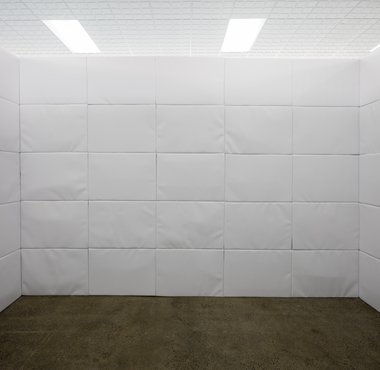

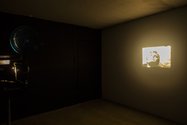
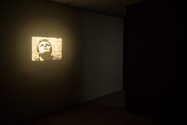
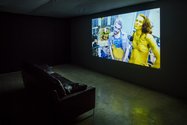
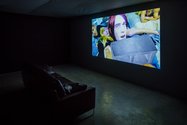


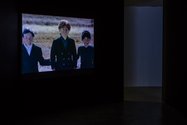
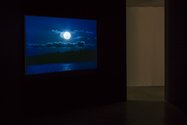


 Two Rooms presents a program of residencies and projects
Two Rooms presents a program of residencies and projects Advertising in this column
Advertising in this column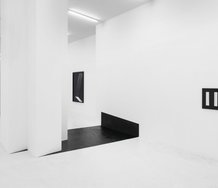

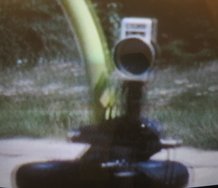
This Discussion has 1 comment.
Comment
John Hurrell, 12:25 p.m. 23 March, 2016 #
Here is a terrific Circuit article on Juliet Carpenter by Henry Davidson: http://www.circuit.org.nz/blog/summer-reading-series-4-henry-davidson-on-juliet-carpenters-ing%C3%A9nue
Participate
Register to Participate.
Sign in
Sign in to an existing account.